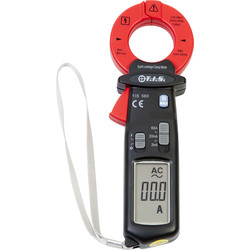So a customer had a nuisance trip and I spent 4 hours trying to find the fault (first hour identifying circuits as none labelled at board).
There was a ring circuit with each leg being fed by 32a breaker, I put them into the the same breaker.
Another ring had its leg connector blocked floating inside the CU so I connected that to it’s other leg in the MCB.
So moving on to the nuisance trip
The RCD which trips is feeding a shower circuit which is turned off when not in use apparently. It feeds downstairs 1 socket radial which does phone and WiFi. And it feeds the ring in front room back room which has so many things plugged into extensions and the boiler and heating water system seems to run off that ring too.
I told him to put the extension lead upstairs onto the other ring being fed by the other RCD and put it into a master plug RCD adaptor and he said the RCD adaptor is tripping which says the fridge is faulty right?
But he also says that the original RCD that was tripping is still tripping but not as much... I have a feeling it’s cos he has too much stuff plugged in which is leaking too much to earth on that ring which the RCD can only take 30ma.
He already paid me for four hours as I thought it was the fridge then he called today saying RCD in cu tripping.
My next step is to buy some sort of current leakage clamp meter to see how much is leaking on that ring through all his crap. If it is high I was thinking of splitting the ring in the middle creating 2 radials and obviously putting them on like 16 or 20a RCBO’s but this would be done when changing the rcd cu to rcbo cu which I recommended. Hopefully this would split the leakage current between the 2 rcbos if that is the problem?
But before I do that is there anything else I can do or test or check as I don’t really want to spend £100+ on a leakage current clamp meter just for this 1 job though I know I can use it on other fault finds but I’m not that busy like that.
Sorry for the long post and grateful for any help thanks.
There was a ring circuit with each leg being fed by 32a breaker, I put them into the the same breaker.
Another ring had its leg connector blocked floating inside the CU so I connected that to it’s other leg in the MCB.
So moving on to the nuisance trip
The RCD which trips is feeding a shower circuit which is turned off when not in use apparently. It feeds downstairs 1 socket radial which does phone and WiFi. And it feeds the ring in front room back room which has so many things plugged into extensions and the boiler and heating water system seems to run off that ring too.
I told him to put the extension lead upstairs onto the other ring being fed by the other RCD and put it into a master plug RCD adaptor and he said the RCD adaptor is tripping which says the fridge is faulty right?
But he also says that the original RCD that was tripping is still tripping but not as much... I have a feeling it’s cos he has too much stuff plugged in which is leaking too much to earth on that ring which the RCD can only take 30ma.
He already paid me for four hours as I thought it was the fridge then he called today saying RCD in cu tripping.
My next step is to buy some sort of current leakage clamp meter to see how much is leaking on that ring through all his crap. If it is high I was thinking of splitting the ring in the middle creating 2 radials and obviously putting them on like 16 or 20a RCBO’s but this would be done when changing the rcd cu to rcbo cu which I recommended. Hopefully this would split the leakage current between the 2 rcbos if that is the problem?
But before I do that is there anything else I can do or test or check as I don’t really want to spend £100+ on a leakage current clamp meter just for this 1 job though I know I can use it on other fault finds but I’m not that busy like that.
Sorry for the long post and grateful for any help thanks.














